Business
Ford Motors and Tesla Forge Unlikely Partnership for Electric Vehicle Charging
Published
2 years agoon

Ford Motors and Tesla have entered into a partnership that will collaborate on charging technology. This news comes as an unexpected development that highlights the changing face of the electric vehicle (EV) sector. The proposal was revealed during a live Twitter Spaces discussion between the CEOs of both manufacturers, Jim Farley of Ford and Elon Musk of Tesla, underscoring their dedication to expanding the EV industry and dealing with infrastructural issues.
Starting at the beginning of 2024, current Ford owners will have access to Tesla’s extensive network of more than 12,000 Superchargers spread across the United States and Canada. It will be possible to charge the Ford vehicles at Tesla’s charging points with the help of an adaptor. A Tesla charging port will also be included in Ford’s upcoming generation of EVs, which is anticipated to be on sale by the middle of this decade. It will eliminate the requirement for an adaptor and allow Ford customers to effortlessly use Tesla Superchargers. The latest partnership between the two car manufacturers makes Ford one of the first automakers to directly link with Tesla’s charging infrastructure.
Ford’s move to tie up with Tesla shows its commitment to accelerating the development and uptake of its electric vehicles, with goals to eventually challenge Tesla’s monopoly on the market. Ford ranked in second position in the fully electric car segment in the United States last year, producing an incredible 61,575 units, while Tesla continues to dominate the EV industry.
Jim Farley emphasized Ford’s relentless commitment to a unified U.S. charging protocol that incorporates Tesla’s NACS plug port. The manufacturer has not yet said if the CCS charging ports seen on their current models would remain on their next-generation EVs. Ford promises consumers that the use of Tesla’s plug would improve accessibility and convenience for owners of its electric vehicles.
Also Read: Antitrust Ruling Challenges American Airlines and JetBlue Partnership
A Ford spokesperson confirmed that the prices for charging services would be competitive on the market. As we get closer to the projected launch date in 2024, more information about the price and other features of the partnership will be made public.
The fact that Tesla is ready to let other EVs use its charging network is not completely unexpected. As revealed by White House officials earlier this year, Tesla promised to open 7,500 of its charging stations to non-Tesla EV vehicles by the end of 2024. Up until this point, Tesla’s charging infrastructure mostly catered to Tesla cars.
Even though Farley and Musk’s companies are direct competitors, they were able to have an understanding and admiring exchange on Twitter Spaces. With the launch of the electrified F-150 Lightning in April 2022, Ford significantly outperformed Tesla in the pickup market. Ford also got the inspiration for its Mustang Mach-E crossover from Tesla’s Model Y and followed Tesla’s model by lowering the price of its electric crossovers.
Elon Musk, CEO of Tesla, SpaceX, and Twitter, has frequently commended Ford as a historic American company and praised its ability to escape bankruptcy during the Great Recession, in contrast to its Detroit rivals, General Motors and Chrysler, who both filed for bankruptcy.
Sahil Sachdeva is an International award-winning serial entrepreneur and founder of Level Up PR. With an unmatched reputation in the PR industry, Sahil builds elite personal brands by securing placements in top-tier press, podcasts, and TV to increase brand exposure, revenue growth, and talent retention. His charismatic and results-driven approach has made him a go-to expert for businesses looking to take their branding to the next level.

You may like
-
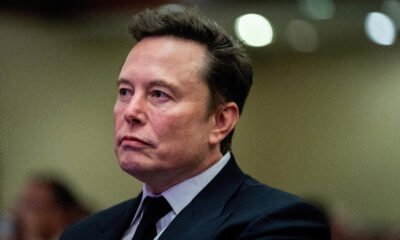

Inside Elon Musk’s Breakup with OpenAI: What Happened Behind the Scenes?
-


‘SNL’ boss Lorne Michaels reveals the show’s satire plans for the upcoming election
-


Business and Beyond: Mumbai’s Ultimate Event for Aspiring Entrepreneurs and Business Leaders
-


The Future of Entrepreneurship: Insights from Royan Nidea’s Vision
Business
What’s Worse Than Recession? Losing Dollar Dominance
Published
11 hours agoon
April 29, 2025
America’s economy has always been a fortress of confidence—until now. As tensions rise and economic policy grows murky, it’s no longer just the threat of recession that has experts worried. The greater fear? The U.S. could be inching toward losing its crown jewel: global financial dominance. A fading dollar, trade turmoil, and shaken investor faith paint a grim picture that extends far beyond a typical economic slump.
Most recessions are economic nightmares. Businesses go under, dreams are deferred, and millions of people feel the squeeze of lost jobs and rising costs. But what the country could face next is something more foundational: the unraveling of America’s central role in the global financial system. For decades, the dollar has been the world’s reserve currency—a status that has powered America through downturns and boosted its leverage across international markets. That “exorbitant privilege,” as one European finance minister once put it, is now at risk.
The U.S. benefits enormously from being the issuer of the world’s go-to currency. It can borrow more easily, recover from economic shocks more swiftly, and impose its will through sanctions and policy. Every time there’s a global crisis, investors pour money into U.S. Treasury bonds. When foreign companies price international deals or central banks build reserves, they often use U.S. dollars. This creates demand that strengthens the currency and gives American leaders a powerful economic tool.

But that system only works if people trust the U.S. economy, and more importantly, its leadership. Policy confusion, erratic economic decisions, and ballooning trade conflicts have begun to shake that trust. The dollar’s share of global reserves has dropped nearly 10% in the last decade. Central banks are stacking gold instead. Countries are experimenting with digital currencies that bypass the dollar entirely.
A key factor behind this shift is the United States’ unpredictable stance on global trade. New tariffs have raised costs across industries, sending ripples through supply chains and pushing prices higher for everyday Americans. Footwear, cars, groceries—nothing is spared. At the same time, the dollar is losing value, and U.S. debt markets are flashing warning signals.
In the past, the dollar’s dominance gave the U.S. the ability to sidestep painful economic adjustments that other nations faced. If Greece or Argentina slipped into recession, they needed austerity to stabilize. When America faced a slowdown, it simply printed more money. That advantage, however, relies on confidence—confidence that the rules won’t change overnight, that contracts will be honored, and that leadership won’t undermine institutions.
Behind closed doors, global investors are asking questions once considered unthinkable: Is the U.S. still the safest place to store wealth? Can they trust Washington to honor its debts? Is the dollar really immune from politics? Recent actions—attacks on central bank independence, chaotic negotiations with foreign partners, and efforts to bend the judiciary—are testing that trust.
The broader economic consequences of losing dollar dominance are staggering. A weakened dollar drives up the cost of imports, making goods more expensive for American families. Higher interest rates would follow, making mortgages, car loans, and credit card payments tougher for consumers. Washington would find it more expensive to borrow, limiting its ability to fund stimulus or invest in growth.
And for businesses, the uncertainty is paralyzing. Executives are unsure whether current tariffs will stick, if new ones are coming, or how foreign partners might retaliate. Expansion plans are delayed. Hiring freezes spread. Investment dries up. And all of this unfolds while inflation continues to nibble away at wages and savings.
In the worst-case scenario, America could face stagflation—rising prices and falling growth at the same time. It’s a policy nightmare. If the government tries to boost spending to support households, inflation worsens. If the Fed raises interest rates to fight inflation, unemployment rises. It’s a no-win situation.
Perhaps most alarmingly, this economic drift isn’t being driven by inevitable market forces. It’s the result of human decisions—policy moves, trade choices, and institutional disruptions that could have been avoided.
There are those in Washington who believe that weakening the dollar could be a strategic advantage, a way to boost domestic manufacturing and reduce trade deficits. But most economists aren’t buying it. Modern industrial production doesn’t rely heavily on human labor—it’s built on automation and global supply chains. Tariffs raise costs, but they don’t bring back jobs. They make it harder, not easier, to manufacture at home.
And even if America’s trade deficit shrinks, it may not matter. The global economy depends on a strong, stable dollar. Undermining it in pursuit of short-term political wins could leave the country poorer, more vulnerable, and isolated.
Level Up Insight:
Losing the dollar’s global dominance wouldn’t just shake Wall Street—it would rewrite the rules of the modern global economy. The effects would hit American workers, families, and businesses first. As uncertainty mounts and global confidence wanes, the U.S. must ask itself: is short-term disruption worth the long-term cost? Economic power isn’t just about GDP numbers—it’s about trust, stability, and leadership. And that might be America’s most valuable currency of all.
Business
China Brushes Off U.S. Tariff Threat, Vows to Safeguard Economy
Published
2 days agoon
April 28, 2025
China’s leadership is moving with calm resolve in the face of mounting U.S. tariff pressures, promising a series of strategic measures to shield its economy, protect jobs, and maintain growth momentum. While higher tariffs from the United States could pose significant challenges to Chinese exports, officials in Beijing are signaling that they are more than prepared — with a robust set of tools — to weather the storm and continue advancing domestic priorities.
During a briefing by senior government officials this week, China laid out a confident strategy to counter external pressures. The measures include strengthening support for businesses, easing lending policies, and rolling out targeted programs to cushion potential economic shocks. The tone was clear: rather than react emotionally to rising trade tensions, China plans to stay steady and focused on its long-term development goals.
The announcement follows a pivotal meeting of China’s Politburo, which analysts believe centered heavily on bolstering economic resilience amid slowing global trade. Leaders emphasized that while external headwinds are real, China’s internal economic engines remain strong enough to sustain growth targets for the year — projected around 5%.
Analysts observing the situation noted that Chinese policymakers are operating in what could be described as “standby mode,” closely monitoring developments while preparing to act swiftly as needed. The core objective is to protect key sectors, particularly export-driven industries that could face immediate impacts from tariff increases.
Despite tensions, the communication between the United States and China appears limited. While American leadership has made remarks suggesting negotiations are underway, Beijing maintains that no formal talks are happening at this time. Instead, China has responded to the new tariffs with its own set of countermeasures, reinforcing its stance against what it calls unilateral economic bullying.
Officials reiterated that they reject the notion of being forced into negotiations through pressure tactics. In a pointed statement,

a senior policymaker criticized the use of tariffs as a bargaining chip, describing it as a violation of both economic logic and international trade principles. The message to global audiences was unmistakable: China intends to defend its interests without capitulation.
Beyond the political rhetoric, the economic stakes are substantial. With combined tariffs potentially reaching 145% on certain goods, millions of jobs tied to export manufacturing could be at risk. A slowdown in exports could ripple through China’s labor markets, especially impacting regions heavily dependent on manufacturing and trade.
Nonetheless, Chinese authorities remain optimistic. They argue that the country’s “employment policy toolbox” is well-stocked, with strategies designed to stimulate job creation, encourage entrepreneurship among the unemployed, and provide financial support to struggling firms. Officials promised to roll out more aggressive employment-support programs if needed, ensuring that vulnerable groups are not left behind.
On the monetary side, China’s central bank is prepared to loosen lending conditions to keep liquidity flowing into businesses and households. Rate cuts, relaxed reserve requirements for banks, and other monetary policy levers are all on the table. Financial stability remains a critical pillar of China’s broader economic strategy during this volatile period.
Supply chain resilience is another major focus. Officials emphasized that even a complete halt of certain U.S. energy and agricultural imports would not significantly disrupt domestic supply chains. China has diversified its sourcing of grain, livestock feed, and energy commodities over recent years, reducing reliance on any single market. With global reserves ample, Beijing is confident it can secure necessary imports elsewhere without jeopardizing food security or energy supplies.
Moreover, China is betting big on boosting internal demand. Plans are underway to stimulate consumer spending through incentives such as rebates for trading in old vehicles and appliances for new ones. Upgrading factory equipment is another major initiative, expected to unleash over 5
trillion yuan (approximately $35 billion) annually in investment demand. These domestic demand-boosting policies are seen as vital to offsetting any external trade drag.
Urbanization is also set to play a pivotal role in China’s long-term growth story. Leaders are pushing initiatives that will encourage more rural residents to migrate to cities. Each percentage point increase in the urbanization rate, officials say, could drive trillions of yuan in new investment. By accelerating this shift, China hopes to create new consumers, new housing demand, and fresh economic dynamism.
While the situation remains fluid, what’s clear is that China is not approaching the U.S. tariff threats as an existential crisis. Rather, it views the challenge as an impetus to further strengthen domestic systems, diversify trade relationships, and double down on modernization efforts.
In the broader picture, the global economy will be watching closely. Escalating tensions between two of the world’s largest economies bring risks not only to China and the U.S. but also to international markets. A full-blown trade confrontation could ripple outward, stoking inflation, disrupting supply chains, and even tipping certain economies toward recession.
Yet at home, China’s leaders are projecting stability, pragmatism, and confidence. Their message to businesses, workers, and international observers is straightforward: China is prepared, resilient, and moving forward, undeterred.
Level Up Insight:
In an increasingly volatile global market, China’s strategic calm highlights a critical lesson for businesses and economies alike: resilience isn’t built by reacting impulsively, but by preparing proactively. While external shocks are inevitable, internal strength — through diversified supply chains, stimulated domestic demand, and consistent long-term investment — becomes the true shield against disruption. Whether you’re an entrepreneur, policymaker, or investor, the future will belong to those who invest in adaptability, not just ambition.
Business
Diversity Drives Success: How Leadership Shapes Modern Prosperity
Published
4 days agoon
April 25, 2025
The idea of the “American dream” is evolving, and so is the way leaders inspire others to find success and purpose. At a recent global leadership summit, top executives shared powerful insights on how redefining prosperity and embracing authentic leadership can fuel both individual and organizational growth.
One leader emphasized the importance of understanding personal motivation and staying true to one’s core values. “Don’t let anyone else define what drives you,” he said. “Always ask yourself: ‘What is your core? How are you leading?’” This mindset, he explained, is crucial not only for personal fulfillment but also for impactful leadership that resonates deeply with communities and teams.
In today’s complex world, the traditional markers of success are shifting. Financial security, once seen as the bedrock of prosperity, is becoming more nuanced. The path to economic stability is no longer linear or guaranteed, and many individuals feel unprepared for major life milestones such as retirement. This growing anxiety has put the spotlight on the responsibility of businesses, not just as profit-making entities but as partners invested in the long-term wellbeing of their clients and communities.
One executive shared that, in response to these challenges, their company has taken deliberate steps to support people facing financial uncertainty. “We have to be there for our customers for the long haul, not just for a one-year period,” he explained. This commitment means offering guidance and resources that help people navigate volatile markets and make confident decisions about their future.

This sense of responsibility extends beyond individual clients to entire communities. Forward-thinking organizations have realized that investing in the economic vitality of the neighborhoods where they operate isn’t just good citizenship, it’s smart leadership. By channeling resources into underserved areas, companies foster environments where prosperity can take root and grow. One such initiative involved committing significant funds to a historically overlooked city, signaling a long-term partnership aimed at creating lasting economic stability.
Diversity, equity, and inclusion (DEI) emerged as a central theme during the summit. Rather than viewing DEI as a corporate checkbox or a response to social pressure, one CEO insisted that it is integral to their company’s very identity and success. “We are that good because of the diversity in our leadership, not in spite of it,” he said. This perspective reframes diversity as a strategic asset, a source of innovation, resilience, and connection that propels organizations forward.
This commitment to DEI also carries a broader societal impact. As one of a handful of leaders from an underrepresented background at the helm of a major corporation, the CEO acknowledged the heightened visibility and responsibility this role entails. “I have to be very intentional about community impact and how I show up,” he said. “Because I recognize that eyes are on us.” His leadership is a powerful reminder that representation matters, not just for optics but for inspiring future generations and driving meaningful change.
Global leadership in today’s interconnected world also demands cultural sensitivity and political awareness. Another panelist pointed out the increasing complexity multinational companies face as they navigate different countries’ values and political climates. “Running a multinational company means exporting soft power,” she explained, emphasizing how leadership now involves balancing corporate goals with the realities of global diplomacy. This requires a nuanced understanding of how a company’s actions are perceived abroad and how they align with evolving international expectations.
The summit brought together voices from business, culture, and social impact to explore how conscious leadership—leadership grounded in purpose and aligned with prosperity, can create a more inclusive future. The message was clear: organizations that prioritize authentic connection, invest in communities, and champion diversity will not only survive but thrive in the new economy.
For today’s leaders, success is no longer just about delivering shareholder value. It is about showing up with integrity, embracing complexity, and using influence to uplift others. It is about redefining what prosperity means on a personal and collective level, and helping others do the same. This is the kind of leadership that changes lives and shapes a future where opportunity and security are within reach for all.
Level Up Insight:
True leadership today blends business savvy with purpose and inclusivity. Companies that embed diversity and community investment into their DNA position themselves as catalysts for change and prosperity. In a rapidly changing world, success means more than profit—it means making a positive, lasting impact.

In the heart of the oilfields, a quiet revolution is underway. For decades, the oil and gas industry has grappled with the challenge of managing vast quantities of wastewater, a byproduct of extraction processes. Traditionally viewed as a costly nuisance, this “produced water” is now being reconsidered—not as waste, but as a potential resource. This paradigm shift is driving innovative strategies aimed at transforming wastewater management, turning environmental liabilities into economic assets.
The Scale of the Challenge
Every barrel of oil extracted brings with it several barrels of produced water. This wastewater contains a complex mix of hydrocarbons, salts, and other contaminants, making its treatment and disposal a significant operational concern. Historically, the industry has relied on methods like deep well injection to manage this waste. However, growing environmental concerns, regulatory pressures, and the high costs associated with traditional disposal methods have prompted a reevaluation of wastewater management practices.
Turning Waste into Resource
The industry’s new approach focuses on the treatment and reuse of produced water. By employing advanced technologies, companies aim to recycle this water for various applications, thereby reducing the demand for freshwater and minimizing environmental impact.

Advanced Treatment Technologies
Innovations in water treatment are central to this transformation. Techniques such as low-temperature evaporation crystallization have emerged as effective methods for treating high-salinity wastewater. This process not only purifies the water but also facilitates the recovery of valuable minerals, contributing to both environmental sustainability and economic viability.
Strategic Reuse Initiatives
Beyond treatment, strategic reuse of treated wastewater is gaining traction. In regions like New Mexico, where water scarcity is a pressing issue, treated produced water is being considered for agricultural and industrial applications. Pilot programs are exploring the feasibility of using this water for irrigation and as a resource in industrial processes, offering a sustainable solution to water shortages.
Economic and Environmental Implications
The shift towards wastewater reuse carries significant economic and environmental implications. Economically, it presents an opportunity to reduce operational costs associated with water procurement and waste disposal. Environmentally, it aligns with broader sustainability goals by conserving freshwater resources and reducing the ecological footprint of oil and gas operations.
Moreover, the potential to extract valuable minerals from treated wastewater adds an additional economic incentive. Elements like lithium, essential for battery production, can be recovered during the treatment process, opening new revenue streams for the industry.
Regulatory and Community Engagement
Implementing these innovative wastewater management strategies requires navigating complex regulatory landscapes and engaging with local communities. Regulatory frameworks are evolving to accommodate new treatment and reuse practices, ensuring that environmental and public health standards are maintained.
Community engagement is equally critical. Transparent communication about the benefits and safety of wastewater reuse initiatives fosters public trust and supports the successful integration of these practices into local water management strategies.
The Road Ahead
The oil and gas industry’s efforts to transform wastewater management reflect a broader commitment to innovation and sustainability. By reimagining produced water as a resource rather than a waste product, the industry is not only addressing environmental challenges but also unlocking new economic opportunities.
As these initiatives continue to develop, collaboration among industry stakeholders, regulators, and communities will be essential. Together, they can drive the adoption of sustainable wastewater management practices, contributing to a more resilient and environmentally responsible energy sector.
Level Up Insight:
The oil and gas industry’s innovative approach to wastewater management exemplifies how environmental challenges can be transformed into opportunities. By leveraging advanced technologies and strategic reuse initiatives, the industry is turning a longstanding problem into a solution that benefits both the environment and the economy. This evolution underscores the importance of adaptability and innovation in addressing complex sustainability issues.
Business
Trading Spike Before Trump Sons’ Appointments Raises Eyebrows
Published
2 weeks agoon
April 18, 2025
It was a quiet Tuesday on Wall Street until two small-cap stocks suddenly spiked. Nothing about the broader market hinted at a rally. There was no earnings call, no acquisition news, no press release. But still, shares of these otherwise overlooked companies surged. Forty-eight hours later, the announcement came: Donald Trump Jr. and Eric Trump were joining their advisory boards. That’s when the whispers started.
For the seasoned market watchers, the sudden surge in volume and price rang a familiar bell one that often tolls in the wake of insider trading allegations. These companies weren’t household names. But the last name suddenly attached to them Trump turned them into headline bait.
Let’s rewind and break this down.
The Trades Before the Trump News
In the days immediately preceding the public announcements, the trading activity around these two companies, let’s call them Company A and Company B for clarity, saw noticeable upticks. Stock prices jumped as much as 30% in unusually high volumes. On paper, it looked like a case of bullish sentiment. In practice, it felt too timely.
When the news dropped that Donald Trump Jr. and Eric Trump would be joining these companies’ advisory boards, the market’s reaction made more sense. Investors were betting on the Trump name drawing attention, capital, and potentially political clout. But the problem wasn’t the reaction to the news—it was how many investors seemed to anticipate it before it became public.
The Trump Brand: A Market Mover
Whether loved or loathed, the Trump brand has undeniable market value. Since the Trump presidency, companies even remotely tied to the name often experience dramatic market reactions. This latest example underscores how that dynamic can ripple beyond politics and into private markets.
But this time, it’s not just a matter of hype—it’s about timing. And when it comes to timing the market with nonpublic information, things get murky fast.
Analysts and financial watchdogs began to flag the trading activity as “unusual.” To the naked eye, it’s the kind of pattern that triggers internal reviews on trading desks and alerts at regulatory agencies like the SEC. The question floating above the trading floor was: Did someone know something before they were supposed to?

No Evidence Yet, But Questions Mount
Let’s be clear: there is no direct evidence, as of now, that Donald Trump Jr. or Eric Trump were involved in tipping off investors. No formal charges. No public investigation. But financial journalists, analysts, and political observers are asking the same question: who bought in, and how did they know?
If the pattern holds true with previous market manipulation cases, the SEC will likely take a closer look. Often, unusual trades trigger “blue sheet” requests—regulatory subpoenas that demand detailed records from brokers and financial firms. These can reveal the identities of traders and link them to insiders if a connection exists.
It’s also worth noting that this isn’t the first time Trump-related companies have experienced unexplained market shifts. From SPACs to social media ventures, the Trump name has become a kind of financial accelerant—one that can fuel both rallies and investigations.
The Optics of Influence
Beyond legality, there’s the question of optics. When former presidents’ children—especially those with their own media and political followings—get involved with public companies, it raises eyebrows. These are not just celebrity appointments. These are individuals with access to powerful networks and a legacy brand that can impact public sentiment and even policy direction.
Investors know that. So do company executives. That’s exactly why appointments like these are made in the first place. The Trump sons bring attention, legitimacy (for certain audiences), and the potential for press coverage that smaller companies can’t buy.
But with influence comes scrutiny. And in a political era already soaked in allegations of favoritism, backdoor deals, and blurred lines between public and private interests, this incident adds fuel to the fire.
The Timing Problem in Today’s Markets
Insider trading is notoriously hard to prove. Yet it remains one of the most damaging allegations for public trust in financial systems. In this case, even without clear wrongdoing, the optics of how everything unfolded have raised concerns about transparency and governance.
What we’re seeing is a symptom of a larger trend: when access becomes currency, and influence is traded like stock.
In 2025, markets move faster than ever. News spreads instantly. Stocks rise and fall in seconds based on sentiment. But the mechanics of insider advantage haven’t changed. Whether it’s a leak from a boardroom or a “tip” passed through private channels, the edge remains—only the methods evolve.
What Happens Next?
The SEC has yet to comment publicly, and the companies involved have issued standard press releases celebrating the high-profile appointments. For now, that’s where things stand. But under the surface, financial regulators, institutional investors, and political watchdogs are watching closely.
If a deeper connection is uncovered—if someone traded based on nonpublic information—it could spark a wave of hearings, headlines, and legal action. If not, it still sends a message about how fragile the boundary is between influence and impropriety in today’s financial ecosystem.
The Trump sons haven’t commented on the trading controversy, and their appointments appear to be proceeding as planned. But for investors, this incident serves as yet another reminder that markets aren’t always as free and fair as they appear.
Level Up Insight
In a market increasingly shaped by media clout and political gravity, the Trump brand remains a potent force. But when stock prices jump before the news hits the wire, it raises more than eyebrows—it invites scrutiny. Whether this case leads to concrete findings or quietly fades, it exposes the uneasy tension between influence, timing, and trust in the American financial system.
For founders, investors, and advisors navigating this new era: reputational risk is now part of your market cap. Transparency isn’t optional—it’s strategy. Because when the markets start whispering, regulators tend to listen.

Global tech’s delicate balance hangs precariously as a major island’s chips dominance becomes a flashpoint in the escalating economic tensions between two leading global powers. Both nations, despite their increasing economic divergence fueled by rising tariffs, share an undeniable and critical reliance: semiconductors produced by this key player. Navigating this intricate dependence is proving to be one of the most complex policy hurdles in their ongoing economic engagement.
Both leading economies view this island’s control over the world’s tech supply chain as a significant national security concern. Consequently, both have initiated efforts to bolster their own domestic chip manufacturing capabilities. However, as the sheer difficulty of replicating the sophisticated ecosystem built over decades by this island’s industry becomes starkly apparent, the two powers are adopting distinctly different strategies to manage their reliance on it and its leading chip manufacturer.
One major economy has recently launched a national security investigation into semiconductor imports, a move that could lead to the imposition of tariffs on the entire sector. A prominent domestic chip designer recently disclosed that it now requires government authorization to export advanced artificial intelligence chips to the other major economy. Public statements from its leadership have previously raised concerns about the island’s market position.
Conversely, the other major economy is taking a different approach. A recent directive from a state-backed trade organization there outlined exemptions for a significant portion of advanced chips from its tariffs on goods from the first major economy. Analysts suggest this move stems from a clear understanding of its critical need for these advanced components and a desire to prevent the ongoing economic engagement from hindering its access.
The result is that many cutting-edge chips, designed by companies in the first major economy but manufactured on the island, will not be subject to tariffs imposed by the second. While these chips might ultimately be acquired by companies in the first economy and then sold to entities in the second, for tariff purposes, the second economy will not consider these chips as originating from the first.
This marks a departure from conventional trade policy. Typically, the origin of a chip is determined by the location where the final stages of production, such as packaging, occur. However, the second major economy will now consider the location where the intricate circuits are etched onto the silicon wafers as the point of origin.
Much like its predecessor, the current leadership of the first major economy is actively trying to incentivize the island’s primary chip manufacturer and other foreign producers to establish more manufacturing facilities on its own soil. While previous approaches involved financial incentives, the current strategy includes the potential use of tariffs to encourage significant investment.
This diverging approach from the second major economy effectively presents a challenge to the long-standing efforts by multiple administrations in the first to revitalize its domestic chip manufacturing, according to a senior technology analyst at a prominent think tank. This is seen by some as a strategic maneuver with implications for tariff burdens and manufacturing locations.
A semiconductor research director at a leading analysis firm further noted that the second major economy’s strategy could also provide a competitive advantage to its own domestic chip manufacturers.
The production of advanced semiconductors is characterized by intricate and globally dispersed supply chains. Many electronics firms in the first major economy design the crucial chips for their devices but outsource the actual manufacturing to companies on the island. These manufacturers, in turn, procure essential materials like silicon wafers from nations such as Japan and specialized chemicals from the second major economy. The highly specialized machinery required for chip fabrication in Taiwan is often sourced from countries like the Netherlands. Subsequently, some of these chips are shipped to other nations, including Malaysia or the second major economy, for crucial testing before being integrated into consumer electronics or advanced computing systems assembled in places like Mexico or the second major economy.

The sourcing of materials is equally complex. Chemicals might undergo refinement in one country, be blended in a second, and finally be utilized in the production process in a third, as highlighted by a leading chip material consultant.
This intricate web of global dependencies makes the imposition of tariffs on the semiconductor industry a logistically daunting task, according to a director at a Taiwanese industry analysis firm. She emphasized that “chip making involves processing and reprocessing, assembly and reassembly, and layers of transportation.”
The vast majority of the world’s most advanced semiconductors are manufactured on this key island, where industry giants have invested billions of dollars over four decades to establish a sophisticated network of fabrication plants and supporting suppliers.
Analysts suggest that the second major economy’s decision to exempt chips made on the island is a clear acknowledgment of the profound reliance of its technology sector on this crucial manufacturing hub, despite previous concerns raised by the first major economy regarding the island’s market position.
The leading chip manufacturer on the island has not issued any official response to these developments.
The creation of a single semiconductor involves the participation of companies across numerous countries. As one major economy attempts to redefine the rules of international trade, each border crossing introduces the potential for tariffs, leading to a rapid accumulation of additional costs. The potential consequence of the ongoing tensions is a significant increase in the cost of chips and the consumer electronics that rely on them, according to industry experts.
“If the two largest economies in the world cannot come to an agreement, they will both drag each other down,” warned a chip material consultant. “Everyone is holding their breath.”
LevelUp Insight:
This intricate situation underscores a crucial reality in today’s interconnected world: even amidst significant economic tensions, technological dependencies can create unexpected alignments and strategic policy adjustments. The willingness of one major economy to make specific tariff exceptions highlights the indispensable nature of the other’s manufacturing capabilities in a critical sector. This isn’t solely about trade; it’s a clear demonstration of the deep integration of global supply chains, particularly within strategically important industries like semiconductors. For LevelUp readers, this emphasizes the delicate interplay between national economic strategies and international technological reliance, a key dynamic shaping the future of innovation and global economic power. Understanding these complex interdependencies is vital for navigating the evolving landscape of technology and international affairs.
Business
Cottagecore 2.0: The Return of Cozy, Nature-Inspired Living in 2025
Published
2 weeks agoon
April 14, 2025
Remember the Cottagecore trend that took over Instagram and TikTok a few years ago? Well, it’s back—but with a modern twist. Dubbed Cottagecore 2.0, this lifestyle movement is gaining momentum in 2025, with more people embracing rustic aesthetics, sustainable living, and cozy, handcrafted home décor. From celebrities to influencers, many are turning their homes into nature-inspired sanctuaries, blending vintage charm with contemporary comforts.
What is Cottagecore 2.0?
The original Cottagecore aesthetic celebrated a romanticized rural lifestyle—think floral dresses, vintage teacups, and hand-sewn quilts. However, the 2025 version of the trend incorporates:
- Smart Home Features in Rustic Spaces: Vintage aesthetics meet modern technology, with AI-powered fireplaces, automated greenhouses, and sustainable energy sources.
- Sustainable & Handmade Décor: More people are supporting local artisans and choosing upcycled, handcrafted furniture.
- Nature-Integrated Living: Urban dwellers are adding indoor gardens, hydroponic setups, and earthy color palettes to bring the outdoors in.
- DIY & Slow Living: From baking sourdough to knitting blankets, there’s a shift toward intentional, slower lifestyles.
Why is Cottagecore Trending Again?
- Escapism & Stress Relief: In today’s fast-paced digital world, people crave peaceful, nostalgic environments that allow them to slow down and disconnect. Cottagecore aesthetics offer that escape.
- Sustainability Movement: The growing focus on eco-friendly living has made rustic, upcycled décor and handmade goods more appealing than mass-produced alternatives.
- Social Media Influence: Platforms like TikTok and Instagram are flooded with home transformation videos showcasing cottage-style interiors, cozy reading nooks, and lush indoor gardens.
How to Embrace Cottagecore 2.0 in Your Home
-
Decorate with Earthy & Vintage Accents – Add rustic wooden furniture, floral wallpaper, antique mirrors, and cozy woven blankets.
- Bring Nature Indoors – Indoor plants, dried flowers, and herb gardens can instantly make a space feel warm and inviting.
- Embrace Handmade & DIY Projects – Try baking your own bread, learning embroidery, or upcycling thrifted furniture.
- Create a Cozy Reading Nook – A small corner with warm lighting, soft pillows, and bookshelves enhances the Cottagecore aesthetic.
Cottagecore 2.0 isn’t just about aesthetic trends—it’s a movement toward slower, mindful living in a world that often feels too fast. Whether it’s incorporating vintage décor or adopting a more self-sufficient lifestyle, this trend is shaping how people create cozy, meaningful spaces in 2025.
Business
SAG-AFTRA’s New Ad Deal Signals a Shift in Talent Rights
Published
2 weeks agoon
April 14, 2025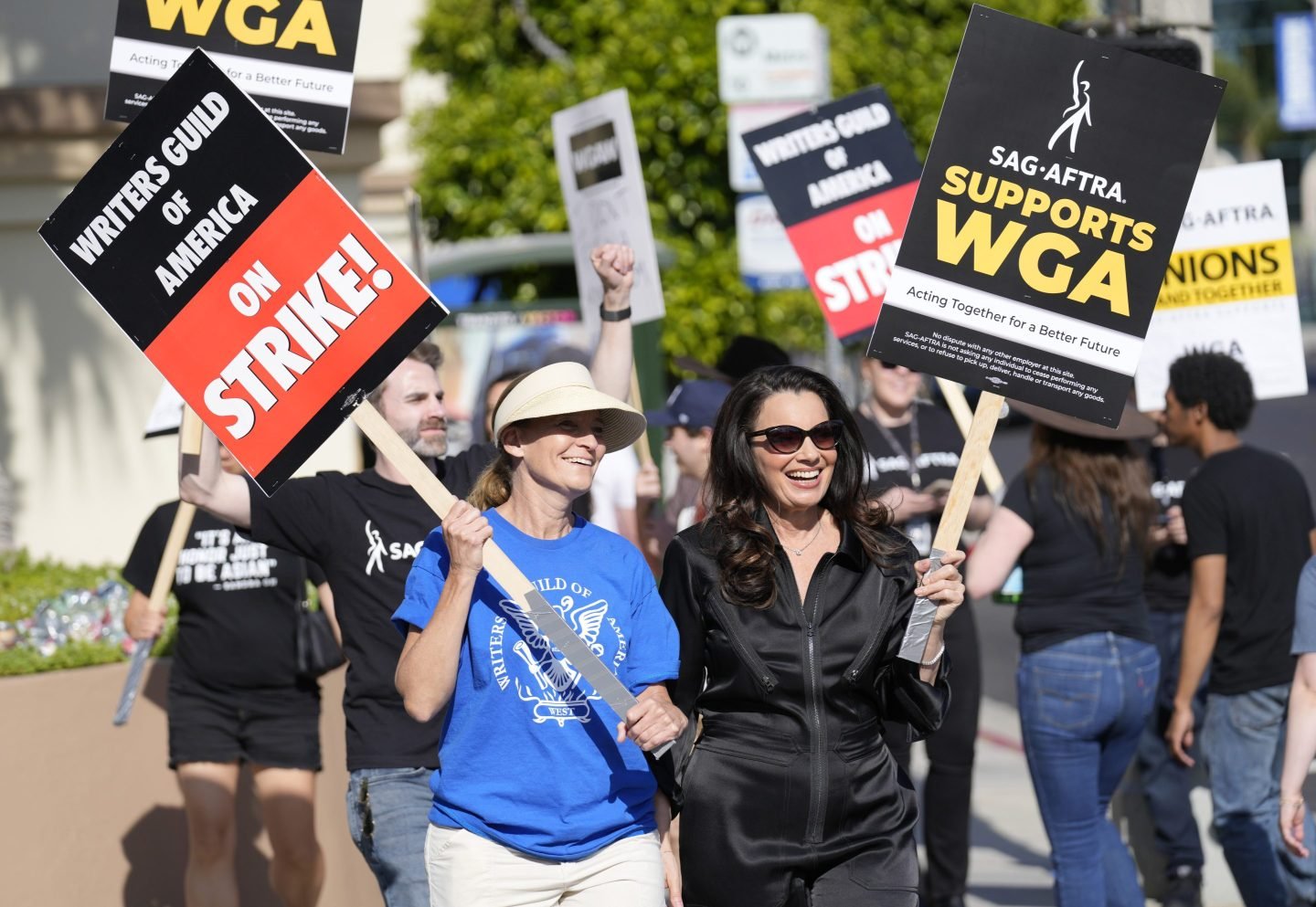
After months of negotiation and growing tension behind closed doors, SAG-AFTRA and the advertising industry’s top players have finally reached a tentative agreement. This successor deal, aimed at replacing the old contracts governing how union performers work in commercials, could shape the future of advertising talent across the U.S. With the commercial world leaning more digital, and actors demanding better pay, protections, and transparency, this agreement is not just a handshake—it’s a shift in how labor and brand storytelling will coexist moving forward.
In the last few years, a silent tug-of-war has been unfolding in the world of commercial advertising. Actors wanted more than a line in a script—they wanted a fair share of the value they bring to campaigns. As influencers blur the lines between creators and performers, and AI tools creep into talent spaces, the existing contracts had started to feel more like relics than roadmaps.
Now, with this tentative agreement in place, there’s cautious optimism from both sides.
For advertisers, this deal promises stability. For performers, it signals progress. And for the entertainment industry at large, it’s a rare moment of collaboration in an otherwise labor-charged year.
SAG-AFTRA has been at the heart of nearly every major labor conversation in entertainment over the past 18 months. From strikes to streaming wars, the union has had to defend its members in an era where traditional roles are being rewritten. With AI-generated voices, digital doubles, and shrinking royalties, the talent pool has been pushing back, asking for updated rules that reflect new realities.
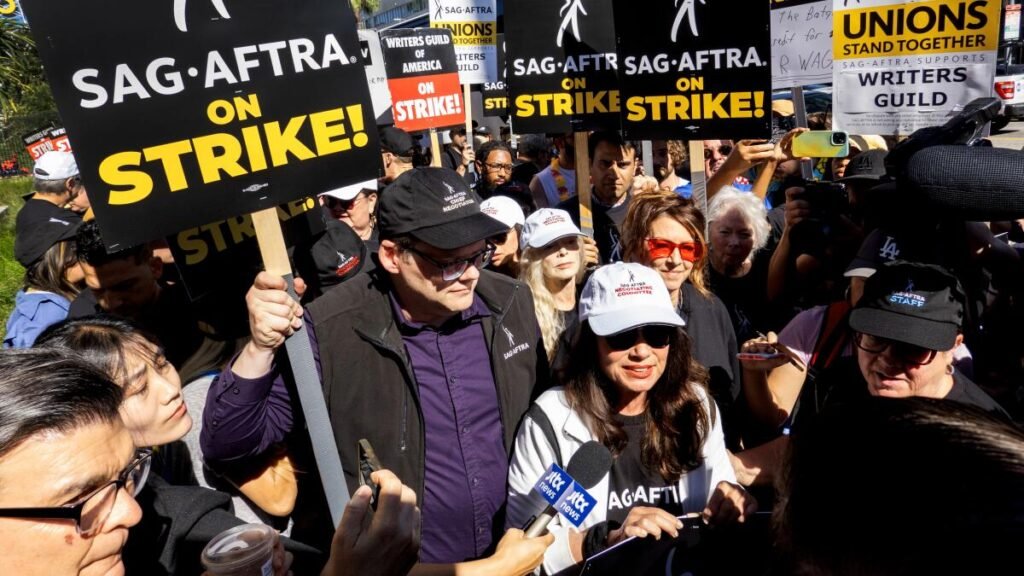
This tentative agreement doesn’t just patch up the old—it lays the foundation for what comes next. While full details are still under wraps, both parties have hinted at major updates in compensation models, residual structures, and digital usage rights. One likely change? Stronger guardrails around AI and how it can (or can’t) be used to replace human performers in advertising.
The commercial sector might not get the same press as blockbuster films or primetime series, but it’s a cornerstone of many actors’ incomes. A single ad campaign can sometimes pay more than a minor role in a streaming series. So when these contracts expire, it’s not just about creative freedom—it’s about financial survival for thousands of performers.
Advertisers, on the other hand, are navigating their own shift. With content demand at an all-time high and consumers expecting authentic, diverse storytelling, the pressure to cast right—and do right by talent—has never been stronger. They need access to union talent, but they also need flexibility, speed, and budgets that make sense in an increasingly data-driven landscape.
That’s what makes this agreement so significant. It’s a signal that both sides are willing to adapt, innovate, and meet in the middle.
It also arrives at a time when brand messaging is under a microscope. Consumers are more tuned in to how brands behave behind the scenes. Ethical sourcing now includes talent treatment. A campaign with a great message but exploitative contracts? That doesn’t fly anymore. This deal, if ratified, could help brands stay on the right side of consumer trust.
The next step is ratification. Union members will get to vote on whether this agreement becomes official. While most expect it to pass, nothing is guaranteed. Union leadership has expressed strong support, signaling that the deal hits key demands. But performers are more informed—and more vocal—than ever before. They’ll read the fine print. They’ll ask tough questions.
And that’s a good thing. Because contracts that affect the creative economy should never be decided in silence.
As we wait for final approval, one thing is clear: this deal is more than a piece of paper. It’s a reflection of how talent, technology, and storytelling are colliding in the ad world. It shows that unions are still powerful when organized, and that advertisers are willing to evolve when the stakes are high.
In a year that’s been filled with division across industries, this tentative agreement offers a different narrative—one of cautious collaboration. And in the business of persuasion, maybe that’s the most powerful message of all.
Level Up Insight:
This agreement isn’t just about actors and ads—it’s about modern work. As industries digitize, human talent remains a brand’s strongest asset. Protecting it isn’t just ethical—it’s smart business. The brands that lead with fairness will be the ones that win both hearts and headlines.
Business
How Economic Uncertainty Pushes America Toward Recession
Published
3 weeks agoon
April 11, 2025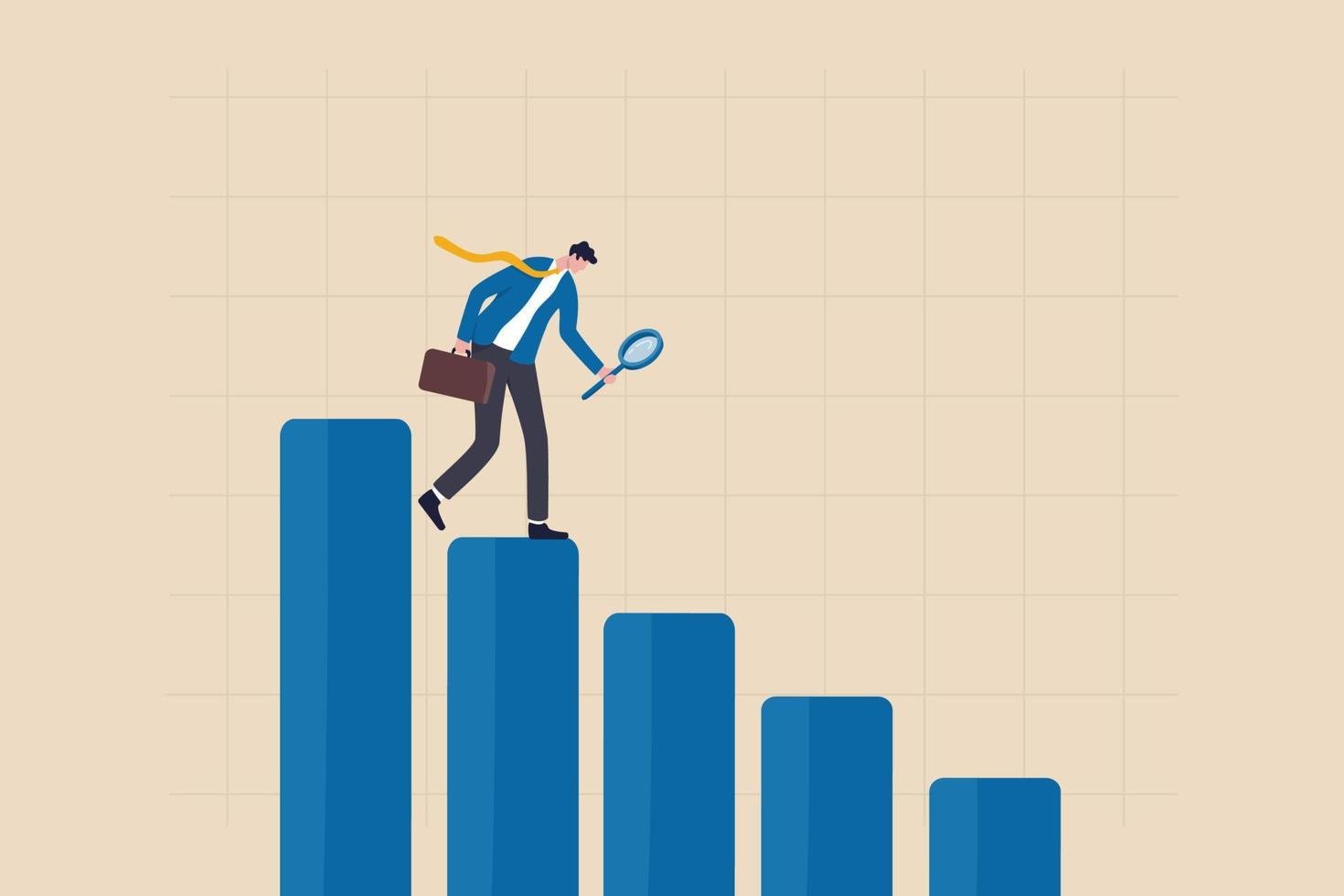
The Silent Trigger Behind Recessions: Why Uncertainty Can Shake America’s Strongest Economy
Every recession has its obvious culprits — stock market crashes, housing bubbles, banking failures, or trade wars. But there’s one quiet, invisible force that often sets the stage long before things officially collapse — economic uncertainty.
In today’s complex, interconnected U.S. economy, uncertainty works like a slow leak in a tire. It doesn’t cause the blowout immediately. But left unchecked, it drains confidence, delays spending, freezes investments — and eventually, brings even the biggest economies to a standstill.
As America faces rising concerns over inflation, interest rates, global conflicts, and changing government policies in 2025, experts are watching one metric more closely than ever — uncertainty. Because history shows: uncertainty isn’t just bad for business. It can quietly push an economy straight into recession.
What Exactly Is Economic Uncertainty?
Economic uncertainty simply means doubt about the future. Will inflation stay high? Will interest rates go up again? Will taxes change? Will a global conflict disrupt supply chains?
None of these things directly destroy the economy. But the fear of the unknown changes human behavior. Consumers stop spending. Companies stop hiring. Investors stop betting on the future.
When enough people pull back at the same time, growth slows, demand shrinks, and recession risks skyrocket.
How Consumers React When Confidence Drops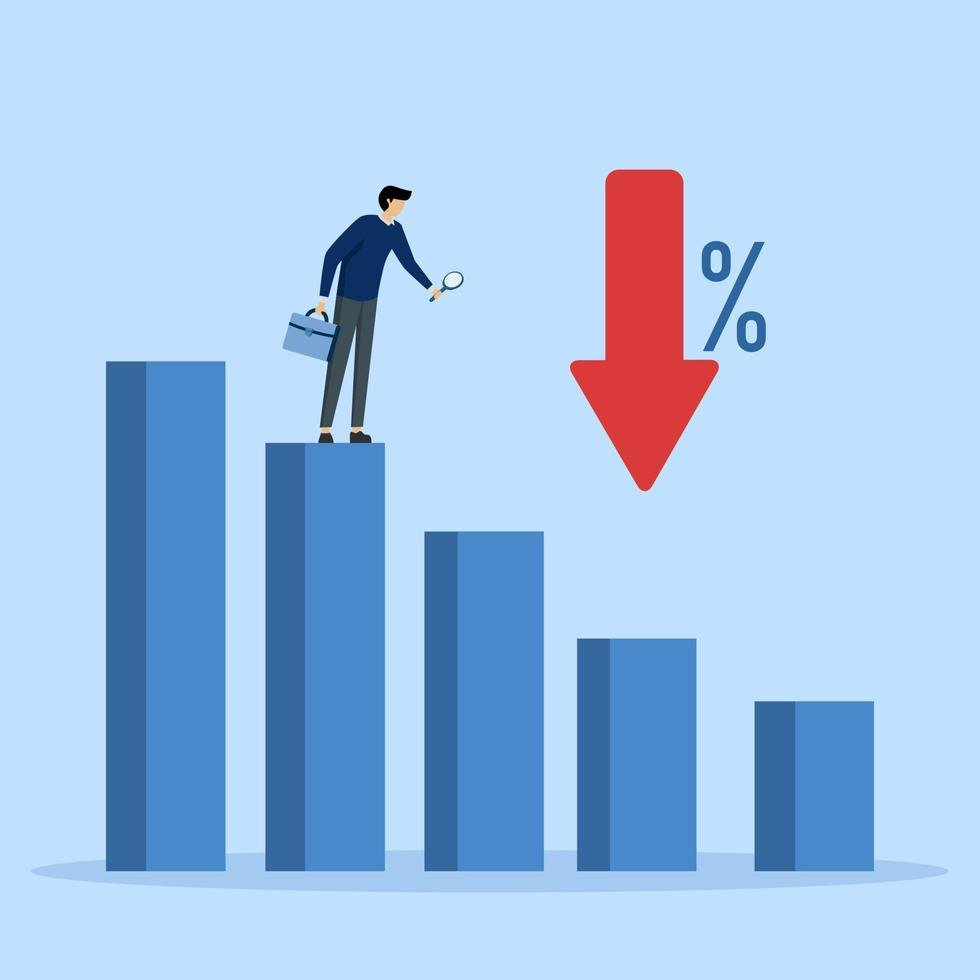
America runs on consumer spending. Nearly 70% of U.S. GDP comes from regular people shopping — buying cars, houses, clothes, groceries, vacations.
But uncertainty flips the switch on all of this.
If a family in Ohio worries about layoffs, or rising gas prices, or shrinking savings — they might skip buying that new car. A couple in Texas might delay their home purchase. Parents in California might cut back on weekend trips or restaurant outings.
Multiply this hesitation across millions of households — and suddenly retailers see declining sales, service industries suffer, and local businesses struggle to stay afloat.
That’s how uncertainty quietly kills demand.
Why Businesses Go Into Survival Mode
It’s not just consumers. Businesses hate uncertainty too — especially in America’s competitive environment where strategy depends on future planning.
Imagine a manufacturer in Detroit thinking of expanding a new factory. But rising tariffs, fluctuating raw material costs, and unclear tax policies make the future look risky.
Result? They delay the investment.
Same with tech startups in Silicon Valley unsure about future regulations around AI or data privacy. Or a restaurant chain unsure about wage policies in different states.
Instead of hiring more people or expanding, businesses hoard cash, cut spending, pause projects — preparing for the worst.
This delay in corporate decision-making slows growth long before any official “recession” arrives.
Financial Markets Feel It First
Wall Street is like America’s mood ring. The stock market doesn’t just react to current earnings — it reacts to future expectations.
High uncertainty triggers sell-offs, volatility spikes, and investor panic. In recent months of 2025, American markets have shown wild swings simply because the future feels foggy.
And when markets get shaky, people’s 401(k)s drop. Business valuations fall. Access to capital shrinks.
All of this flows right back to consumer confidence — creating a vicious cycle.
Tariffs, Policies & The Government’s Role
Economic uncertainty doesn’t always come from natural causes. Sometimes, it comes straight from government decisions.
In recent years, aggressive tariff policies, trade disputes, sudden tax reforms, and unpredictable regulatory moves have added fuel to America’s uncertainty fire.
Businesses today operate in a global ecosystem. Sudden import tariffs, like the ones proposed in 2025 on Chinese goods, don’t just hurt foreign companies — they hit American companies relying on those supply chains.
Without stable, predictable policy environments, uncertainty flourishes — and with it, the risk of recession grows.
The Domino Effect Nobody Talks About
Recession isn’t just about GDP contraction. It’s about people — their jobs, homes, families, and futures.
Uncertainty hurts small businesses first. Then it hits corporate earnings. Then jobs. Then entire industries.
And the worst part? The fear itself becomes contagious.
When people expect a recession, they start behaving like it’s already here — cutting back, hoarding cash, delaying everything. This collective hesitation turns fear into reality.
That’s why economists call uncertainty “the silent recession starter.”
Level Up Insight: The New Currency of Business is Clarity
In a world that’s moving faster than ever — uncertainty is everywhere. But the real winners in this economy won’t be the biggest or loudest players. They’ll be the clearest.
Whether you’re a startup founder, a small business owner, or an industry leader — your #1 job in uncertain times is to create clarity where others see confusion.
→ Be transparent with your team.
→ Be honest with your customers.
→ Build adaptable strategies, not fixed plans.
→ Invest in skills and systems that work in any market.
Because recessions don’t kill businesses — unpreparedness does.
America’s economy has survived wars, crashes, pandemics, and bubbles. It will survive uncertainty too.
But the next wave of industry leaders won’t be the ones waiting for clarity. They’ll be the ones creating it.
That’s how you Level Up when the world slows down.
Business
Meet the Mom Redefining Luxury Diaper Bags: Label The Muse Founder Saïka Bince Is Turning Motherhood Into a Fashion Statement
Published
3 weeks agoon
April 11, 2025
When Saïka Bince caught a glimpse of herself in the mirror while packing a diaper bag one morning, she didn’t just see a tired mom—she saw a muse gone missing. That fleeting moment sparked a quiet revolution. What began as an identity crisis bloomed into a couture movement. Today, she is the founder of Label The Muse, a luxury fashion brand out of Atlanta that’s transforming motherhood into a main-character moment.
Label The Muse isn’t just about handbags—it’s about visibility. Power. Presence. It’s about telling mothers: “You can carry bottles and still carry the room.” With signature pieces like the Bince Bag, a handcrafted marvel that takes over 80 hours to create, this designer diaper bag brand blends form and function into a love language that speaks directly to women who refuse to choose between elegance and everyday reality.
A Muse Born of Many Names
For Saïka, a first-generation Haitian American and mother, fashion has always been about legacy. Each bag in the Label The Muse collection is named after a matriarch in her family: Kesner (her grandmother), Ti Nette (her mother), and Bince (herself). These names aren’t just titles—they’re tributes. Embroidered into the brand’s DNA is a generational celebration of womanhood, sacrifice, and strength. These handbags are heirlooms in the making, designed not only to carry the essentials of motherhood but also its emotional lineage.
From Beauty to Boldness: The Journey of a Self-Taught Designer
Before founding Label The Muse, Saïka spent nearly a decade immersed in the beauty industry, where she created a makeup brand rooted in self-expression and personal transformation. Motherhood didn’t merely change her path—it expanded it. Feeling the tension between function and fashion, Saïka began sketching and sourcing materials with a clear vision: to create a diaper bag that didn’t erase her identity but elevated it.
She taught herself how to sew from scratch. Every stitch, clasp, and curve of her designs became a deliberate offering to the modern muse navigating nap schedules and personal ambition in the same breath.
The Bince Bag: Where Function Meets Fashion
Luxury diaper bags. Designer diaper bags. Vegan leather handbags. Label The Muse delivers all three and more. Each piece is constructed from bold, standout vegan leather and finished with soft gold-painted stainless steel hardware. Inside? Thoughtfully engineered compartments for diapers, electronics, bottles (double-insulated, of course), and even waterproof linings. Outside? Bold textures, artistic silhouettes, and couture-caliber polish.
This is what sets Label The Muse apart: They don’t design for “motherhood.” They are designed for mothers.
Legacy in Every Loop
More than a business, Label The Muse is a living archive—a fashion house preserving the elegance of Black motherhood, amplifying its voice, and redefining its aesthetic. Saïka is building an empire where beauty and burden aren’t at odds, but co-exist in every bag she creates. For her, being a mother didn’t mean losing herself. It meant expanding. Becoming not less—but more. The woman. The nurturer. The creative. The leader. The muse.
“Identity isn’t either/or—it’s and,” she says. “When you embrace every part of who you are, you don’t shrink. You become legacy.”
The Future Is Fashioned by Mothers
While the fashion world has long treated motherhood as an afterthought in fashion, Saïka sees it as a centerpiece. Her vision? A runway where baby bumps wear silk. Campaigns where softness is seen as a strength. Fashion houses that finally honor the women doing the most sacred work: creating life while staying entirely themselves.
And Label The Muse is just the beginning.
You can explore the full collection and learn more about the story behind Label The Muse by visiting the official website at www.labelthemuse.com.
Trending
-

 Health4 years ago
Health4 years agoEva Savagiou Finally Breaks Her Silence About Online Bullying On TikTok
-

 Health3 years ago
Health3 years agoTraumatone Returns With A New EP – Hereafter
-

 Health3 years ago
Health3 years agoTop 5 Influencers Accounts To Watch In 2022
-

 Fashion4 years ago
Fashion4 years agoNatalie Schramboeck – Influencing People Through A Cultural Touch
-

 Fashion4 years ago
Fashion4 years agoThe Tattoo Heretic: Kirby van Beek’s Idea Of Shadow And Bone
-

 Fashion8 years ago
Fashion8 years ago9 Celebrities who have spoken out about being photoshopped
-

 Health4 years ago
Health4 years agoTop 12 Rising Artists To Watch In 2021
-

 Health4 years ago
Health4 years agoBrooke Casey Inspiring People Through Her Message With Music
-

 Tech2 years ago
Tech2 years agoGoogle Developer Conference to Unveil Latest AI Updates, Including PaLM 2 Language Model
-

 Health4 years ago
Health4 years agoTop 10 Influencers To Follow This 2021
